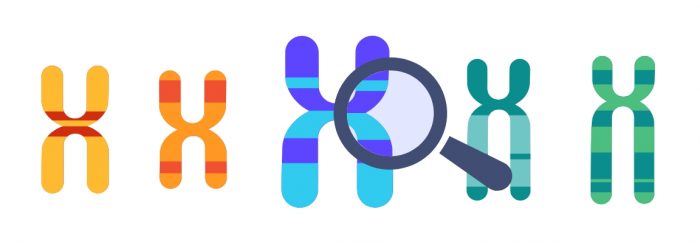Let’s start from the beginning before discussing whether ankylosing spondylitis is hereditary; it’s only fair to explain what this pathology is.
The quick way to describe it is as a chronic arthritis with a special preference for the lower area of the spine. It affects the bones and joints in that area, causing constant inflammation that can lead to the fusion of the vertebrae.
If the vertebrae fuse together, the back becomes hunched. Mobility is lost, and breathing becomes difficult.
It is classified, and also considered the most representative, within the group of diseases called spondyloarthritis or spondyloarthropathies. These are all chronic inflammatory arthritis affecting the spine and the sacroiliac joint (its connection with the pelvis).
All diseases in this group share symptoms and treatment.
The incidence of ankylosing spondylitis varies according to the source consulted, as it is a disease with different presences depending on the region. A 2014 study found a prevalence (individuals with the disease at a given time) of between 23.8 and 18.6 individuals per 10,000 in Europe. However, the figure dropped to 7.4 per 10,000 in Africa.
Currently, it is considered that in Europe 1 in 100 people have it, with 7 new cases per year per 100,000 inhabitants.
It is more common in males (three times more than in females) and begins between the ages of 20 and 40. Moreover, it is also more severe in this group.
What Are We Facing?
Symptoms of ankylosans spondylitis: pain in the lower back that comes and goes. As the disease progresses, the pain becomes constant.
Although it starts in the lower part, the affected area also grows in surface, causing the entire back to hurt. Other areas of the body may experience inflammation, adding to the original problem.
Flexibility is progressively lost and may lead to a hunched posture.
Activity and exercise have positive effects. That’s why pain and stiffness in the area are worse during rest periods, like at night or in the morning upon waking up. Affected patients are recommended specific postures and movements for the back.
These alterations in the body also arise symmetrically.
Fortunately, recognition is easy. It usually begins in patients under 45 years old who complain of back pain for more than three consecutive months.
On one hand, blood tests are conducted searching for inflammatory markers related to the disease. For example, the erythrocyte sedimentation rate, which measures the speed at which red blood cells settle at the bottom of a tall, thin cylinder. A faster rate of descent indicates inflammation.
Another is the rheumatoid factor, an autoantibody common in rheumatoid arthritis but found in other autoimmune diseases.
Other methods include imaging of the affected areas, such as ankylosans spondylitis X-ray or magnetic resonance imaging (MRI) of the spine and pelvis.
MRI shows changes in the spine earlier, though X-ray is more reliable when visualized in it.
There is no 100% reliable method to detect the disease; it is done through a combination of several.

Doctor, can genetic ankylosing spondylitis be cured?
The correct verb is “treat,” not “cure.” We are talking about treatments for ankylosans spondylitis.
Similar to other autoimmune diseases, there is currently no definitive cure for this pathology. In most cases, it’s here to stay.
However, there are multiple treatments available, many of which slow down the progression of the disease (which can sometimes even go into remission).
The usual treatment is non-steroidal anti-inflammatory drugs (NSAIDs) like ibuprofen. The main goal is to control swelling and pain.
One of the reasons for “ibuprofen” is also the advantage that it can be purchased without a prescription in many countries.
If the disease worsens, there are stronger measures to confront it. We have corticosteroid therapies and inhibitors of the tumor necrosis factor and IL-17, two pro-inflammatory components of the immune system.
The most severe cases require the most serious treatment: surgery. Hip replacement can even be necessary. Advanced solutions when standard treatment does not work.
It’s a disease with complicated prognosis. It can either go into remission or worsen over time, depending on the individual and circumstances.
Sometimes it can lead to additional pathologies, from intestinal inflammations to lung abnormalities. One third of patients end up developing other systemic complications.
Is ankylosing spondylitis hereditary?
We are dealing with one of those complex diseases where not all the factors involved are known, but it is known that genetics is one of the involved factors.
Therefore, you do not inherit the disease as such, but rather an increased risk of suffering from it. It is considered to be between 10 and 20 times more common in people who have first-degree relatives with the disease.
Most people suffering from the disease have the HLA-B27 gene. This gene produces an antigen that belongs to the class I major histocompatibility complex. Its main function is to present proteins from inside the cell to cytotoxic T lymphocytes.
The idea is that, in the presence of viral infections, the cell can in this way alert the immune system, presenting viral proteins to inform of the infection.
It seems that sometimes it does its job too effectively, activating the immune system, even when no pathogens are present.
This gene is very much related not only to ankylosing spondylitis but also to the majority of spondyloarthropathies. It is also associated with other pathologies involving immune system activity such as Crohn’s syndrome.
90% of people who suffer from ankylosing spondylitis are positive for the HLA-B27 gene. However, only 8% of people with this gene develop the disease, so having it is not a firm sentence.
The HLA-B27 gene is considered to determine 20% of the genetic risk of this pathology.
Only one other gene within the HLA family, the HLA-B60 gene, has also been associated with the risk of developing ankylosing spondylitis.
It is likely that other genes encoding proteins within the histocompatibility complexes, such as HLA-B51, contribute to the genetic risk.
These complex pathologies, with many factors still unknown in their operation, are almost impossible to predict today. Fortunately, there are other diseases that a tellmeGen Advanced DNA test is indeed capable of analyzing.



